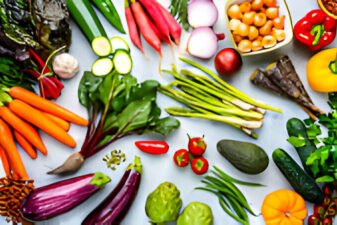Dietary sodium is measured in milligrams (mg). The most common form of sodium used is table salt, which is 40% sodium. One teaspoon of table salt contains 2,300 milligrams of sodium.
Sodium in Processed Foods
Sodium is also added to various food products, both for taste and as a preservative. Thus, the more processed the food, the higher the sodium content is likely to be. Foods reconstituted with water (eg. soups, bouillon cubes, processed meats) also contain salt. Some of these added forms are monosodium glutamate, sodium nitrite, sodium saccharin, baking soda (sodium bicarbonate), and sodium benzoate.
Sodium in Fast Foods
Fast foods are generally very high in sodium. Another reason to eat in.
“Lower-Sodium” Foods
Fortunately, there is a growing range of lower-sodium foods in many food stores. Ideally, choose these lower-sodium brands whenever possible.
Table 1. Sodium Content of Selected Foods
| Foods | Sodium Content mg per 100g or 3.5 ounces |
| Table salt | 39,300 mg |
| Chicken bouillon cubes | 16,300 mg |
| Soy sauce | 7,120 mg |
| Minestrone soup, dry (pkt) | 6,400 mg |
| Tomato soup, dry (pkt) | 3,100 mg |
| Bacon, back, grilled | 2,700 mg |
| Table salt | 2,300 mg per teaspoon |
| Black bean sauce | 2,150 mg |
| Smoked salmon | 1,880 mg |
| Salami | 1,800 mg |
| Pretzels | 1,720 mg |
| Cornflakes | 1,100 mg |
| Hard cheese | 1,000 mg |
| Tortilla chips | 850 mg |
| Potato chips | 850 mg |
| Margarine (average) | 800 mg |
| Butter regular, (average) | 750 mg |











